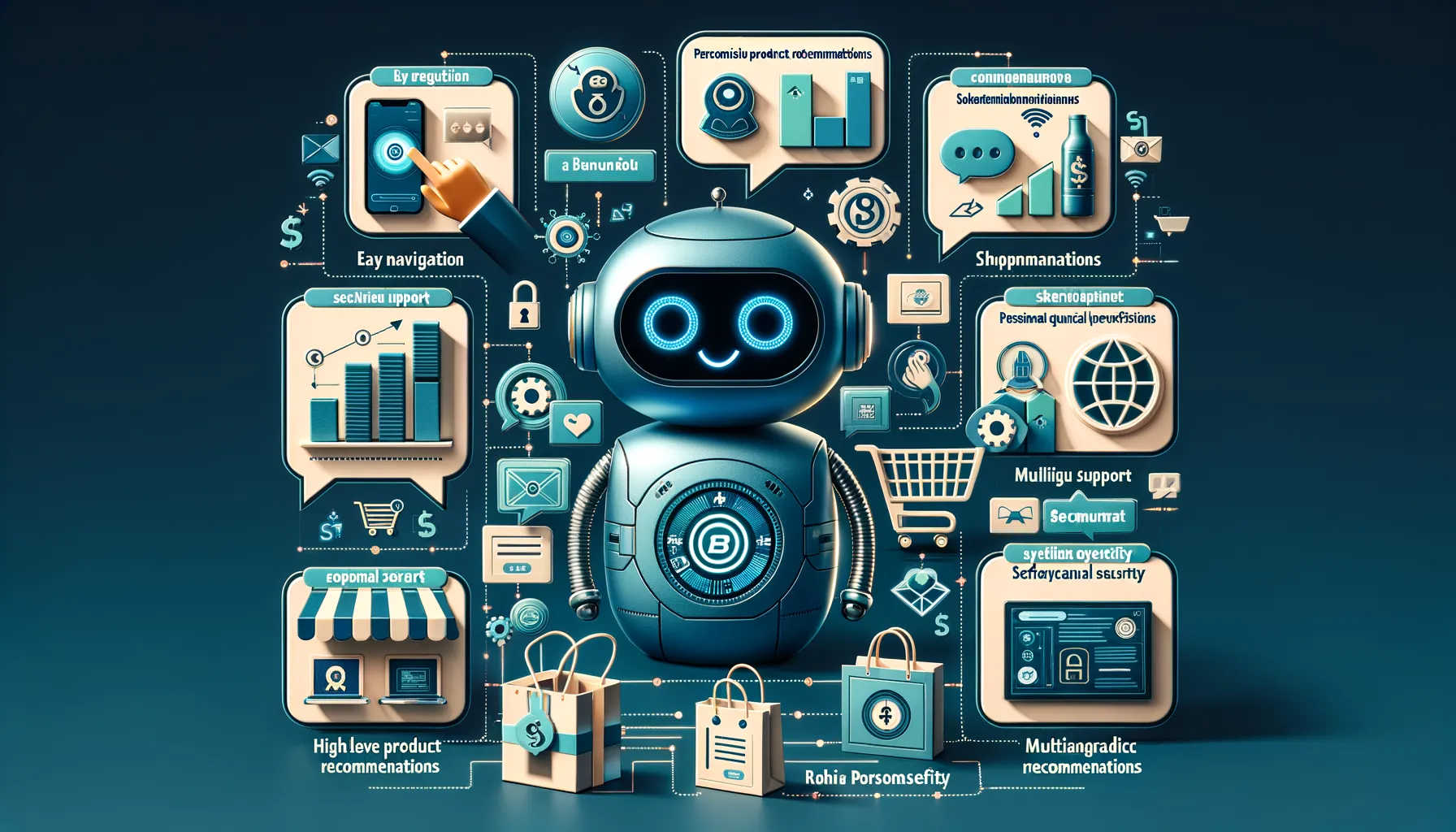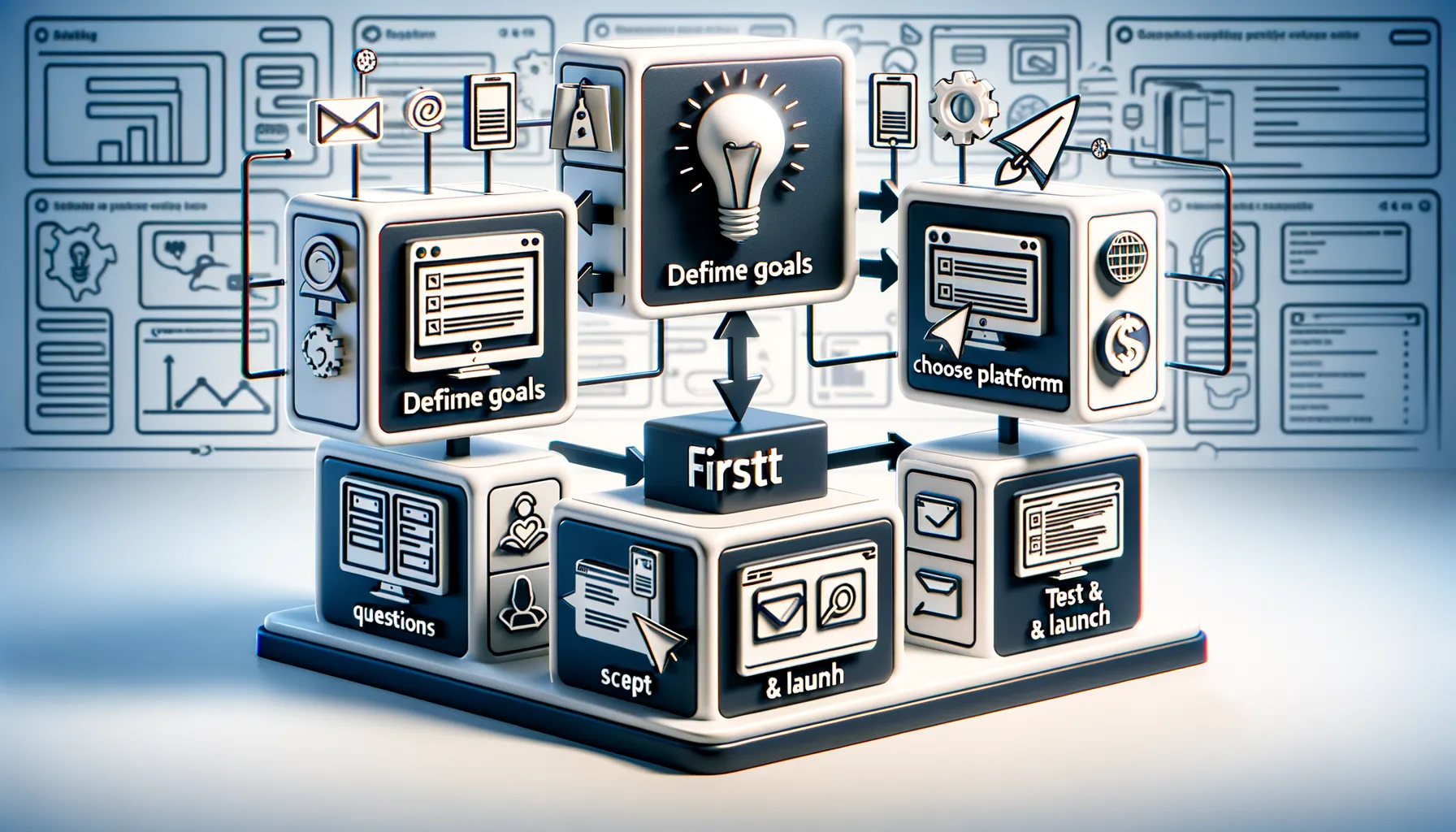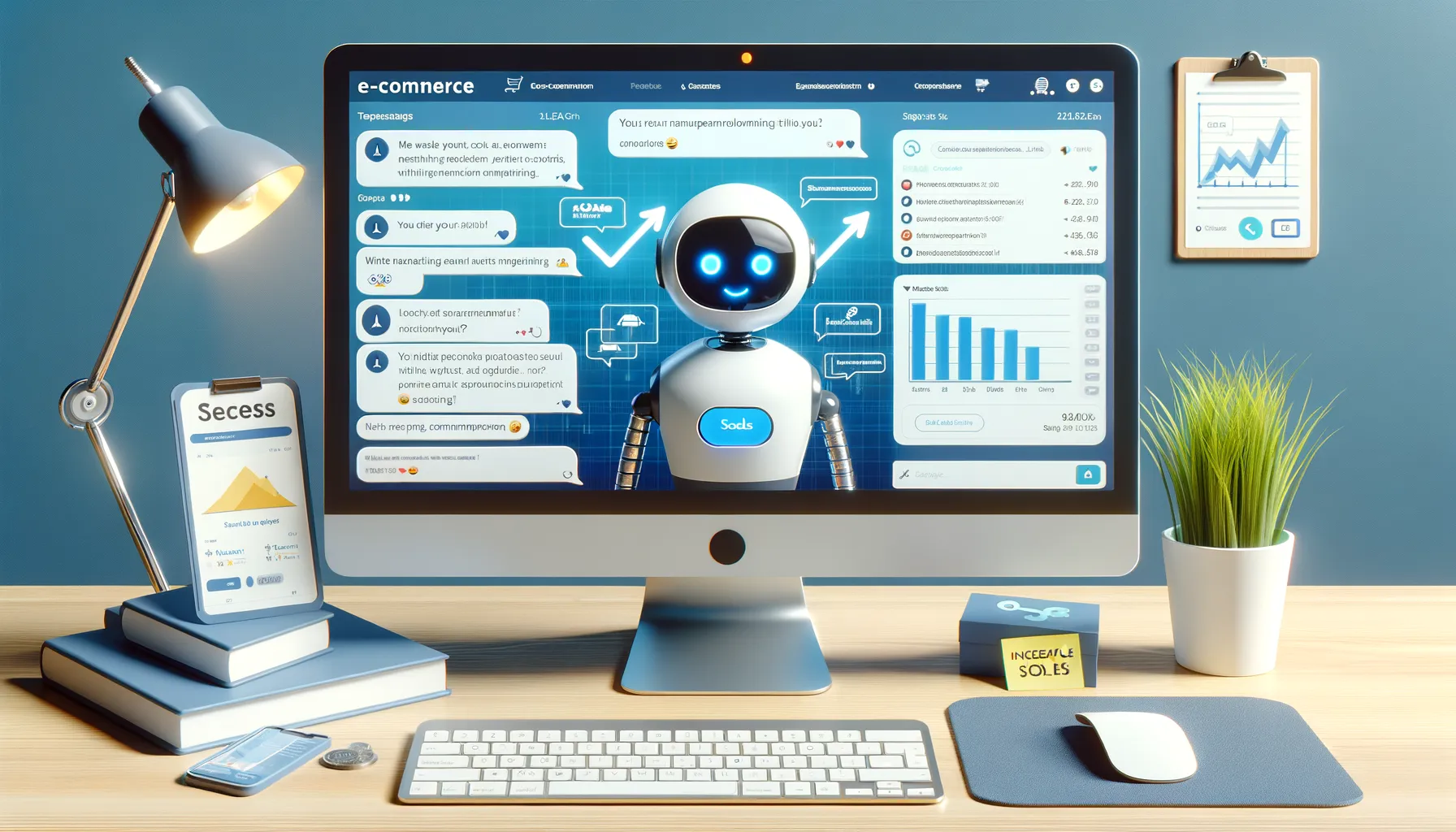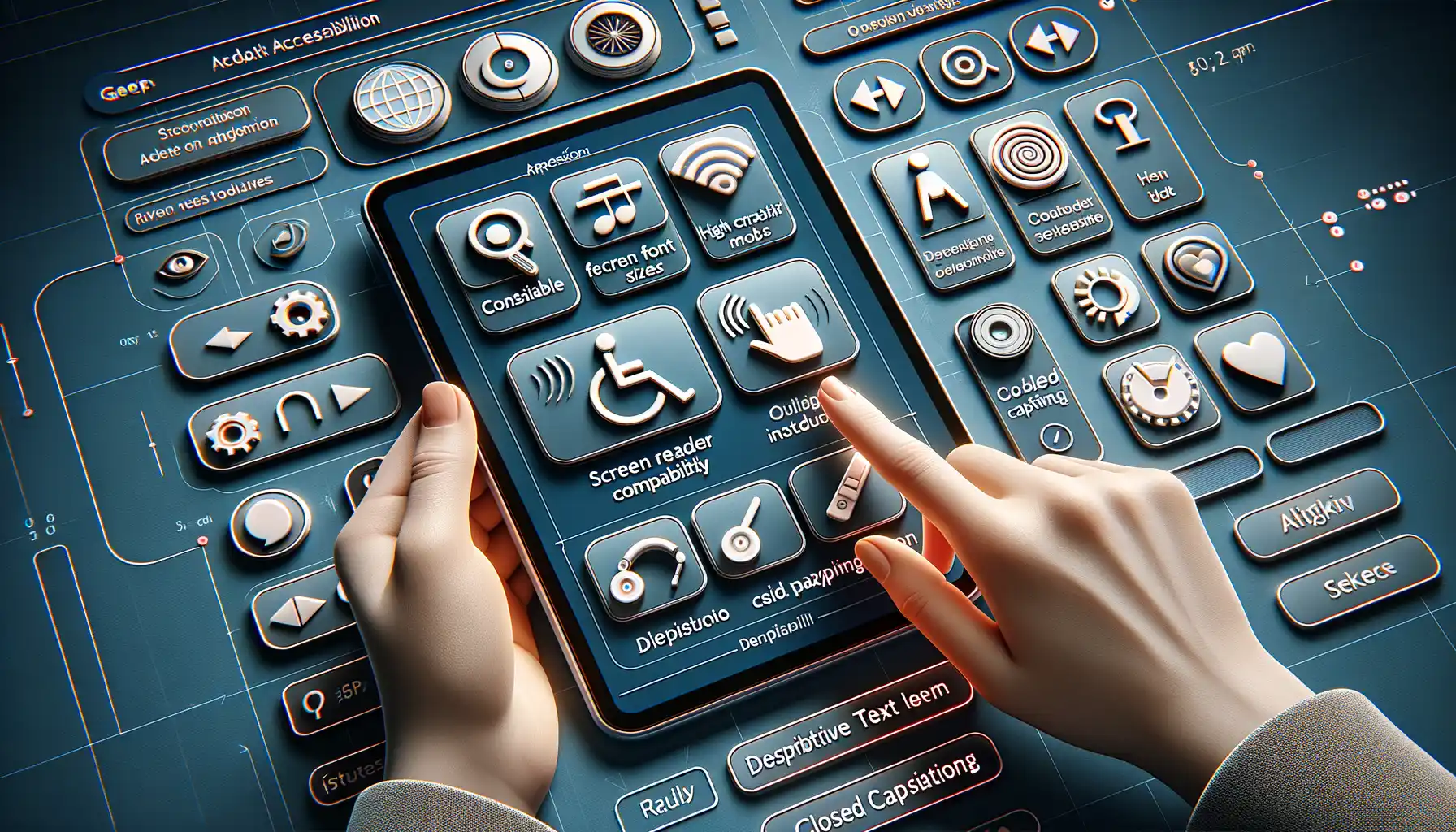Benefits of Chatbots in Ecommerce
Why Chatbots Are a Game-Changer for Online Stores
Picture this: it’s 11 PM, your customer is urgently searching for the perfect gift, but they’re lost scrolling through endless product pages. Enter your trusty chatbot—like a tireless personal shopper that’s always on call. One chat, a couple of suggestions, and voila! Sale complete. That’s the magic of chatbots in ecommerce. They don’t just assist—they rescue.
The genius lies in their ability to provide **instant responses**. No queue, no hold music, no “we’ll get back to you in 48 hours.” Customers ask, and chatbots answer—right here, right now. But their brilliance doesn’t stop there.
- Personalized recommendations: Chatbots analyze browsing habits faster than you can blink. It’s like having a mind-reader offering exactly what shoppers want.
- 24/7 availability: Your store never sleeps, and neither does your chatbot. Midnight requests? Early morning queries? Sorted!
- Effortless problem-solving: Returns, refunds, or FAQs? Chatbots resolve them all with zero hassle.
Customer Delight at Scale
It’s not just about efficiency—it’s about wowing your audience. A chatbot remembers details (was it size M or L?) and anticipates needs before customers even voice them. It almost feels like shopping with a best friend who just *knows*. And let’s not forget the ROI: while your chatbot saves time, boosts engagement, and handles hundreds of chats at once, your team focuses on growing the business. That’s a win-win wrapped in tech brilliance.
Key Features to Include in Ecommerce Chatbots

Must-Have Tools for an Engaging Ecommerce Chatbot
Not all chatbots are created equal. Some are polite but clueless; others are the digital equivalent of your favorite sales associate, remembering your preferences and even recommending the perfect add-on. So, what makes a chatbot truly exceptional? Here’s what your ecommerce chatbot must bring to the table.
First off, let’s talk **personalization**. A good chatbot shouldn’t sound like it’s been talking to 1,000 other customers right before you. With a sprinkle of AI magic, your bot can remember past orders, suggest complementary products, and even call your customer by their name. Imagine Sarah shopping for sneakers—boom! The chatbot reminds her about matching socks she looked at last week. That’s service.
Now, let’s address multitasking. Your chatbot should master skills like:
- Smart product search with conversational tone (you type “red heels,” it shows options in seconds).
- 24/7 customer support that solves issues without saying “hold please.”
And whatever you do, go big on interactive features. Think live order tracking, exclusive promo codes, or even FAQ responses that feel like chatting with a friend who always knows the answer. Make your bot unforgettable!
Steps to Implement a Chatbot for Your Online Store

Lay the Foundation: Define Your Chatbot’s Role
Before jumping into the tech wizardry of building a chatbot, it’s critical to ask yourself: What do you actually want this chatbot to do? Is it there to assist shoppers with finding products, process orders, or handle returns like a virtual concierge? Think of your chatbot as a new employee—you wouldn’t hire someone without assigning them responsibilities, right? Define its role clearly and script a personality that aligns with your brand. Whether it’s a playful helper for a trendy fashion store or a professional guide for electronics, make it unforgettable.
Set Up Your Tech Arsenal
Once the vision is clear, it’s time to choose tools that match your needs. Here’s where it gets exciting! Most ecommerce platforms, like Shopify or WooCommerce, offer integrations with AI-powered chatbot builders such as Botpress, ChatGPT API, or Tidio.
- Pick a platform that supports multi-channel use—your bot should smoothly assist customers on your site, Facebook, or even WhatsApp.
- Train it using real customer queries collected from previous interactions. These insights are gold!
- Test relentlessly. Get your team—or even better, a pilot group of loyal customers—to “talk” to your bot and iron out quirks.
Remember, creating a chatbot isn’t just about automation—it’s about crafting an experience that feels as human (and helpful) as possible.
Case Studies: Successful Ecommerce Chatbot Implementations

Bringing Customer Service to Life
Picture this: your customer is browsing your online store late at night, searching for the perfect product. Instead of waiting for business hours or frantically Googling answers, they encounter a friendly and knowledgeable chatbot ready to assist them. That’s exactly what happened with Brand X, a popular fashion retailer.
Their chatbot, affectionately named “Style Buddy,” did more than just answer FAQs—it provided personalized style suggestions based on browsing history. The result? A staggering 35% increase in conversion rates within six months. Customers felt like they had their own personal shopper, minus the pushy sales vibe!
Transforming Abandoned Carts into Sales
Abandoned carts are every ecommerce owner’s nightmare, right? Enter the chatbot hero of HealthyBites, an organic snack company. This bot didn’t just remind users about their forgotten items; it sent playful messages like, “Psst! Your quinoa chips are getting lonely…” paired with an exclusive discount code.
Here’s what made it shine:
- Timing – follow-ups sent within 30 minutes of cart abandonment.
- Customization – suggestions tailored to the user’s browsing preferences.
- Integrated payment links for lightning-fast checkout.
The result? 25% more cart recoveries in three months. Sometimes, all it takes is a little personality—and maybe a nudge—to turn hesitation into action.
Future Trends and Innovations in Ecommerce Chatbots

Emerging Technologies Reshaping Chatbots
The future of ecommerce chatbots is like stepping into a sci-fi movie—packed with breakthroughs that feel almost magical. Imagine a chatbot that not only answers customer queries but *anticipates* their needs before they even type a word. With advancements in AI-powered personalization, this isn’t just a dream. These bots will analyze individual shopping behavior, offering tailored recommendations as though they’ve known your customers for years.
Now, let’s talk about voice commerce. Picture this: your chatbot doesn’t wait for typed messages; instead, it engages users through natural, flowing conversations via voice interfaces. With integrations into smart assistants like Alexa and Google Home, customers might soon be purchasing items by casually saying, “Hey Google, reorder my favorite coffee.”
- Real-time emotion detection: Future chatbots could adapt their tone based on customer sentiment—calming frustrated users or celebrating alongside happy ones.
- Multilingual fluency: Language barriers? Smashed! Bots will effortlessly switch between languages, providing global accessibility.
The Role of Hyper-Automation
Hyper-automation takes chatbots to superhero status. Envision bots capable of handling entire transactions—from guiding the customer to the checkout page to arranging delivery. Tools like RPA (Robotic Process Automation) will make this seamless, drastically cutting operational delays. And let’s not forget predictive analytics. By analyzing past purchases, these bots can nudge shoppers with “Don’t miss out on your favorite sneakers; they’re low in stock!” vibes.
The pace of innovation here feels electric, doesn’t it? What used to be basic Q&A bots are rapidly transforming into full-fledged virtual shopping companions.







